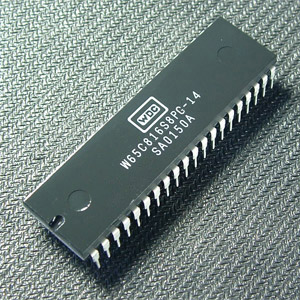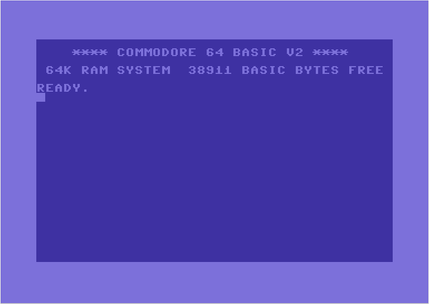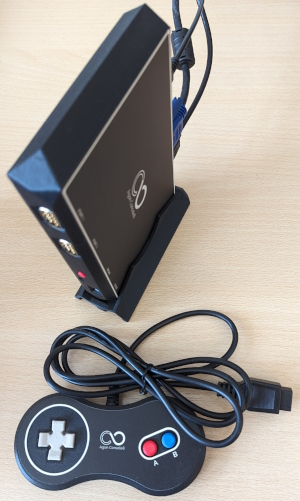New 65C816 Kit, Back to BASIC
Let's divide those who use computers into three groups:
- The ones that remember 1980s and early 1990s computers.
- Those who only think a computer is a Windows PC or Apple Mac.
- The current generation who do all their computing tasks (messaging, YouTubing, shopping, email) on a smartphone.
The first group remember the simplicity and immediacy of using a computer. The second group lost that behind a Graphical User Interface (GUI) and bloated operating systems. The third group are often unaware they are using a computer at all. In this post, new projects attempting to re-introduce the simpler 1980s style of computing are covered. Some are based upon the venerable (but still available) 65C02 8-bit processor, or its slightly bigger brother, the 65C816 8/16-bit processor. Read on if you are interested in returning to BASIC computing with the new 65C816 kit being built by those who want a simpler way to tinker with the bits and bytes inside a computer.

A return to BASIC simplicity
With 1980s computers you could turn them on and instantly a prompt would appear to allow for programming and machine manipulation. They had an easy-to-use computer language built in, BASIC, Beginners All-purpose Symbolic Instruction Code. Whilst BASIC is often sneered at by macho uber-programmers, it is a great language to start tinkering with programming as it was designed for ease of use.
BASIC is largely overlooked today despite its strengths. It can be argued that the modern world is lacking in providing an easy-to-use experience for those who want to tinker with software and hardware. BASIC was designed for that task. Despite the multi-GHz and multi-core processors, and fast SSDs of modern PCs and laptops, it can take minutes to get to the position of being ready to write a line of code, and a large learning curve is needed to get to the point of writing a useful program. Even hardware that has been designed to provide an easier tinkering experience, such as Arduino or the Raspberry PI, is missing the simplicity of early computing. However, the message of simplicity and immediacy has not been entirely lost.

The retro computing scene has kept the machines and memories of the 1980s and 1990s going. Many involved in the retro scene, including many young recruits, have dabbled with building new machines based on the 8-bit processors seen in the computers of the 1980s. There is now some serious commitment to bring newer 8-bit machines to market, with several successes.
Some of the latest projects attempting to reboot the simpler style of computers include:
The C256 Foenix Project by Stefany Allaire
The Foenix Project by Stefany Allaire - On the website, it once stated: 'The C256 Foenix is a "new" retro computer based on the WDC 65C816 running @ 14Mhz. The idea behind this creation is to come up with a computer that could have possibly followed the Commodore 128 if things would have been different at Commodore at the time.' There is the FeonixIDE available to aid the development of Feonix computers. The Feonix Project now has computers called F256 which are based on the 65C02.
The Commander X16 by David Murray and his team
The Commander X16 - This is being led by The 8-bit Guy (David Murray), although the design is being discussed on their Facebook group, there is a video on the rationale for a new 8-bit computer on his YouTube channel - Building my dream computer - Part 1. Although the original intention was to use the 65C816 processor, the Commander X16 now uses the 65C02 processor. The Commander X16 GitHub pages have an emulator to allow software development to take place before getting hands on the hardware. The Commander X16 emulator can be compiled via Emscripten for running on a web page. It can be tried at the Commander X16 Web IDE.
The Neon816 by Lenore Byron
The Neon816 by Lenore Byron - from the Hackaday.io project page: '...the design of an 8-bit/16-bit nostalgia motherboard using currently in-production parts, and designed to interface primarily with modern peripherals.' The Neon816 also has a group on Facebook, it uses the 65C816 processor and a Mini-ITX sized board. Lenore's Neon816 Developer Edition is currently available for order at Tindie.
Lots of 65C02 Based Hardware
The above projects demonstrate the appetite for a simpler form of computing. It allows people to get their hands dirty with the hardware without having to deal will all the bloat of a modern PC, laptop or smartphone. If you want to get involved with 65C816 kit, or even 65C02 processors, there are numerous resources available. The 65C02 and 65C816 processors have been used in many different types of products and applications. Thus, the new projects above are not the first time 65C816 computers have been designed, at BCS Technology Limited they document their efforts. Furthermore, do not forget the manufacturers of the 65C816, Western Design Center, they have their W65C816SXB single board computer, and others, available if you want to jump straight in with hardcore programming of a 65C816.
New Commercial Projects
The renewed interest in retro computers has led to new commercial projects, including mini versions of 1980s computers with built-in games and an updated version of the Commodore 64, THEC64.
How About a New Z80 BASIC Computer
There is an alternative to 65C816 or 65C02 based-computers. At the Byte Attic there is the Agon computer. It is based on a Zilog eZ80 Acclaim microcontroller (eZ80F92) with an 18MHz clock speed. The Sinclair ZX Spectrum and other computers of the 1980s used a Z80 processor and there are many fans of Z80-based systems. If you are one of them then the Agon may be of interest.
FabGL for a ESP32 Based Retro Computer
The FabGL project is a graphics emulator for the ESP32 microcontroller and the basis for the graphics in the Agon BASIC computer. It can emulate different CPUs to make a simple retro computer to run BASIC.
Olimex Jumps on The Bandwagon
Olimex Ltd is a well-established electronics business based in Bulgaria. They have seen the growing popularity of retro-style computers and have produced their versions:
- Their version of the Byte Attic's Agon.
- Their take on a FabGL computer.
- Their new Neo6502 combines an RP2040 microcontroller and 6502 CPU, taking the Agon concept to the 6502.
Console8 is Based on the Agon
UK electronics design company Heber have produced a "console" version of the Agon computer. The Agon Console8 is available from the UK's Retro Collective shop. Heber, Retro Collective, Arcade Archive, and RMC Retro are based at Belvedere Mill, Chalford, UK.

ZX Spectrum Next
The ZX Spectrum Next is a modern take on the UK's 1980s ZX Spectrum home computer. Funded via a Kickstarter campaign. You'll need to wait for the next campaign to get one unless one pops up on the second-hand market.
PC Software to Try Out BASIC
If you are sticking with the heavyweight PC there are plenty of ways to run BASIC or BASIC-like programs. Projects like FreeBasic and MiniScript, or see Wikipedia's BASIC page.
A List of 65C816 (and 65C02) Resources
The widespread use of the 65C02 and 65C816 means that the Internet is full of useful knowledge for those wanting to spin up their own 65C816 computer, program an existing computer board, or write a new version of BASIC or a custom kernal (or for non-Commodore fans - kernel). Here is a list of useful resources to get going on whatever 65C816 project you want to tinker with.
- Start with the manufacturers of the 65C816 (and 65C02), visit the Western Design Center documentation page.
- The Western Design Center also have their WDCTools.
- There is a 637-page book on Programming the 65816, Including the 6502, 65C02 and 65802 at the Internet Archive.
- Yet another web page on the 65816 chip, A 65816 Primer.
- At 6502.org there are links to numerous resources on the 65C02 and 65C816 processors.
- Also on 6502.org is an article on Investigating 65C816 Interrupts.
- Looking for a basic interpreter, try Enhanced Basic (EHBASIC) at Lee Davison's archived website.
- Awesome list of 6502, 65C02, 65816 Resources at eiroca.net.
- At Wikibooks there is Super NES Programming, the SNES processor used 65C816 and there is useful programming information in this Wikibook.
- Brutal Deluxe Software specialises in the Apple IIGS, which used the 65C816.
- Want to program in C and try another compiler, here's a link to cc65 - the 6502 C compiler.
See Also
- Back to BASICs 40 years later, a rescued article celebrating the birth of BASIC.
- Rugg/Feldman benchmarks at Wikipedia.
- For a full list of all the articles in Tek Eye see the full site alphabetical Index.
Author:Daniel S. Fowler Published: Updated:







